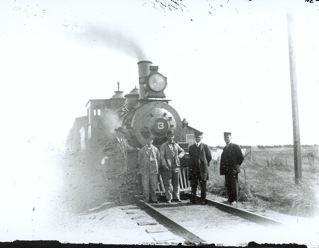
(Photo: Ocean Shore Railroad, courtesy Spanishtown Historical Soceity)
While the cement curbs and sidewalks remained [many of them leading nowhere], no one built homes near them. The most ambitious project–the Coney Island West–did not materialize and Granada now had the curious feeling of a ghost town.
The Ocean Shore Railroad declared bankruptcy and the rails were torn up about 1922–but four years later prominent leaders in Half Moon Bay looked for mass transit alternatives, among them a 4,000 foot long tunnel cut through the Santa Cruz Mountains.
About the same time Lewis W. Martin purchased 640 acres for $150,000 in what was now known as El Granada. Martin announced that he had elaborate plans for a development called the El Granada Country Club, accessed via Isabella and Columbus Avenues–close to San Francisco, he said, where he planned to direct an agressive membership campaign.
The landowner sliced the tract into 7500 cabin sites and talked of planting colorful flowers everywhere.
But Lewis Martin’s plans collapsed when the Great Depression put a choke-hold on many investments and there was no great rush to buy property which was declining in value. Also, the strangely constructed Pedro Mountain Road–a road supposedly built for automobiles–with its remarkable collection of twists and turns and its uneven, unexpected drops in the pavement, did not win the hearts and minds of drivers.
On the other hand, as I have written many times, with the loss of the railroad, the Coastside’s isolation remained, turning Granada and its neighboring communities into a perfect haven for rumrunners, bootleggers and roadhouses during Prohibition.
….end….
